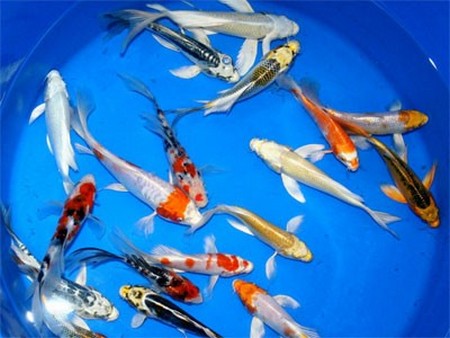I cannot emphasize too highly the importance of a stress-free environment for KOI. Many factors make fish stressed, and the following five-point plan will alert you to the most severe:
1. WASTE POLLUTANTS: these should be low, i.e. the water should be chemically clean. To achieve this, a biological filter of adequate size for the volume offish population in the pond must be installed. Using a water-testing kit to ensure that the effect offish respiration and waste have not made the water toxic by increased ammonia or nitrite levels is also essential. Basic kits can be purchased that test for ammonia, nitrite, nitrate and pH, but where koi keeping is concerned, testing for oxygen and carbonate hardness is important as well.
2. INSUFFICIENT VITAMINS AND MINERALS: supplement these by feeding with good quality food, specially formulated for koi.

3. LACK OF OXYGEN: KOI need a good supply of oxygen. Water circulated via some form of water course helps aeration and will normally provide sufficient oxygen, but most KOI keepers incorporate a venturi (a tube with a constriction to reduce or control fluid flow) or, preferably, an air pump into their system to provide the copious amount of oxygen required.
4. HEAVY METALS SUCH AS LEAD, COPPER AND ZINC: levels of these should be low or, better still, completely absent, as they can restrict growth, prevent reproduction and cause death if allowed to persist and accumulate in the KOI’s body. If a water quality report (normally free from your mains water supplier), shows these levels to be high in your incoming mains tap water, then an input water filter designed to remove these metals is advisable.
5. VARIABLE LEVELS OF TEMPERATURE: temperature stability is a parameter of water quality often overlooked, but variable levels can seriously affect the lives of the fish. KOI keepers often add some form of thermostatically controlled heating to their pond system to achieve stability of temperature, and swings can be minimized by creating and using during the winter months a removable cover made from an insulating material such as bubble plastic.